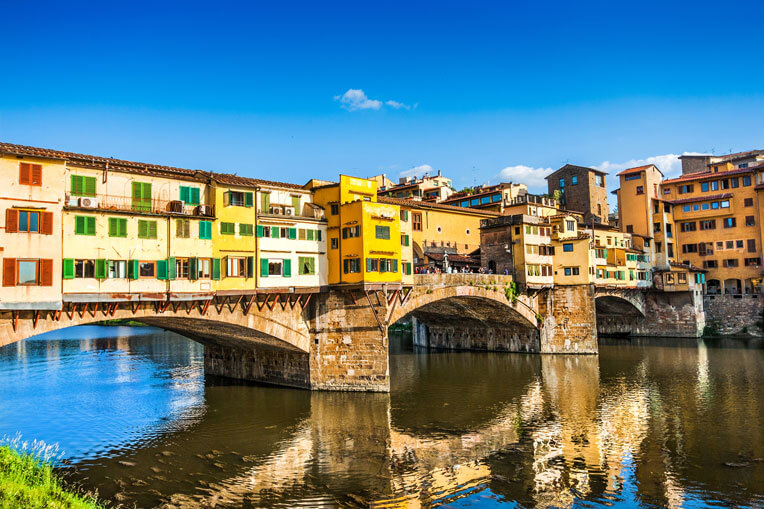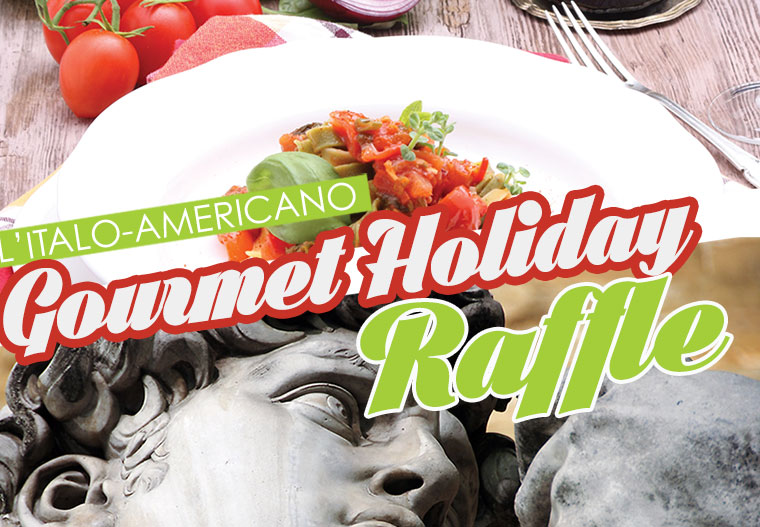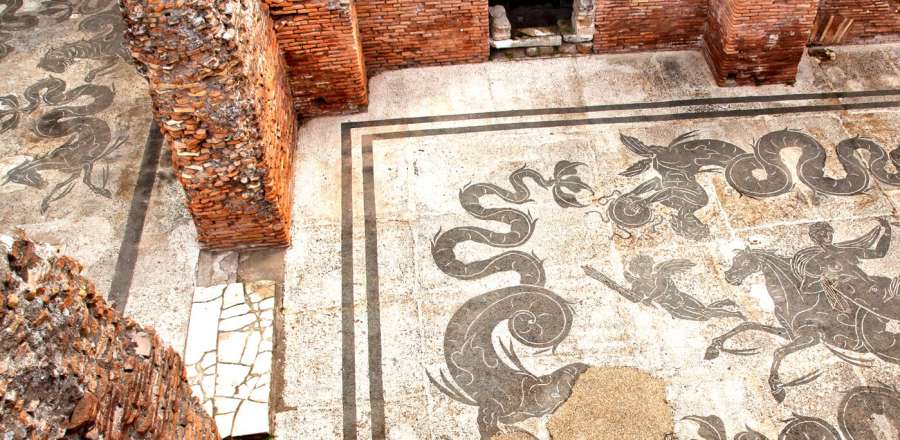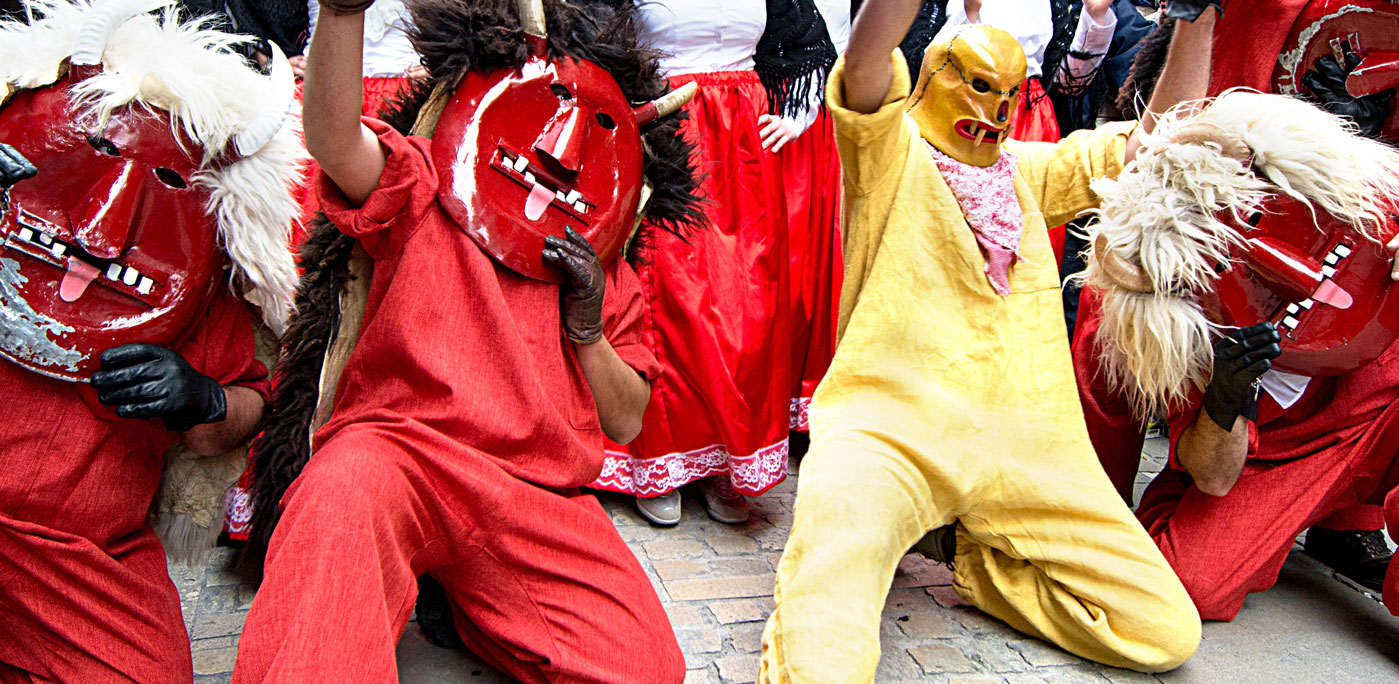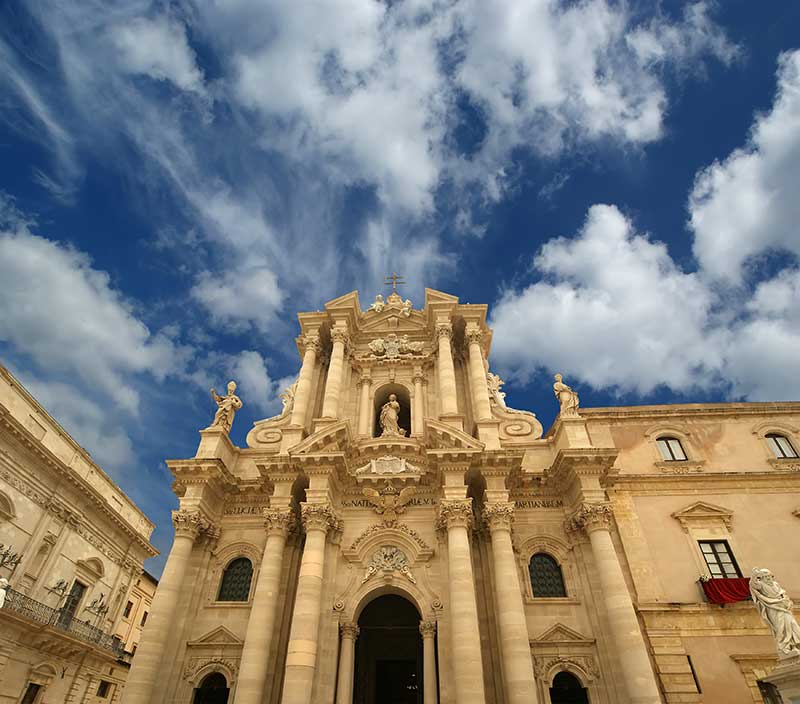There’s been a bridge at the site of Florence’s legendary Ponte Vecchio since the days of the ancient Romans. Today it’s a focus for Florence’s jewellers and draws tourists from around the world. But the bridge has had a fascinating history. Where jewels now sparkle and shine, there once were butchers shops. High above the popular shops lies a secret passageway allowing the old Medici family to cross the city from the Palazzo Vecchio town hall to Palazzo Pitti without having to set foot on the city’s cobbles. And it was the only bridge in Florence not to be bombed by either the Germans or the Allies during World War II. Let’s take a closer look at this beautiful bridge to see what other secrets it holds.
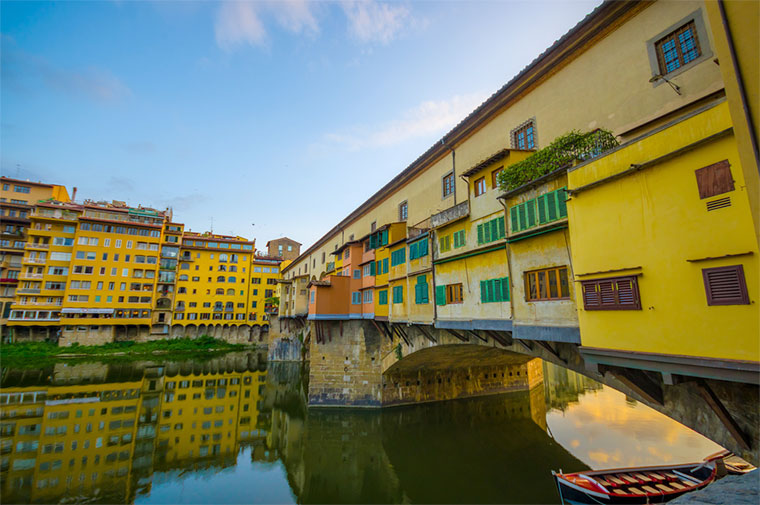
The bridge’s history
Local legend tells that when the German troops finally withdrew from Florence in 1944, towards the end of World War II, Hitler expressly ordered them not to damage Florence’s iconic Ponte Vecchio. Apparently he remembered the bridge from an earlier state visit and had enjoyed the view greatly. Sadly, however, every other bridge along the River Arno was bombed as they beat a frantic retreat, leaving the Ponte Vecchio blocked by rubble of toppled buildings at each end but still intact. It wasn’t the first time the bridge had faced destruction and wouldn’t be the last.
Its believed that there has been a crossing at the narrowest point of the River Arno since ancient Roman times and possibly even since the Etruscans, although the first record of a bridge only dates from 996 AD. Floods in 1117 AD swept the stone and wood bridge away so it was rebuilt stronger, only to be smashed by another deluge in 1333 AD.
Undeterred the Florentines rebuilt again, constructing at least the third bridge on the site in 1345 and its this one that stands to this day fully deserving its moniker of Ponte Vecchio, meaning Old Bridge.
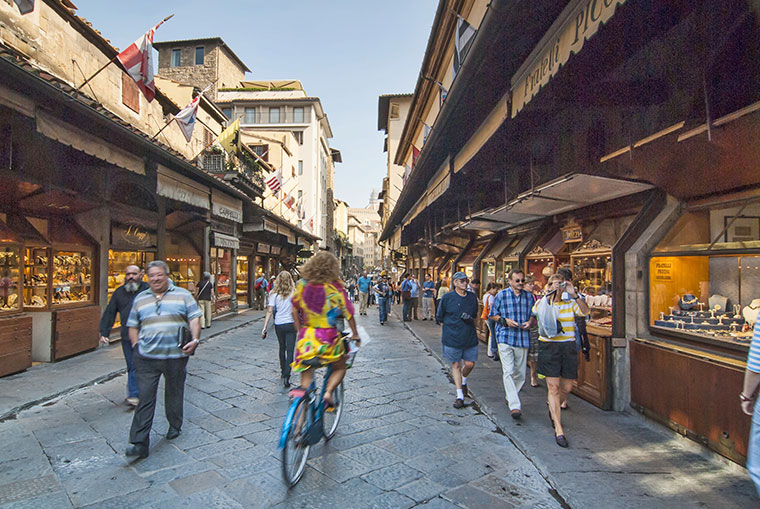
Ponte Vecchio’s shops
Centuries ago, when the ponte was rebuilt, bridges served a number of purposes, not just getting you from one side of the river to the other. It was common for medieval crossings to be fortified with towers and ramparts like the Castel Vecchio Bridge in Verona. Some had chapels, whilst others like Venice’s Rialto Bridge and Florence’s Ponte Vecchio included shops as a way of earning extra money through taxes.
In the early days merchants sold their wares from tables and as early as 1422 the bridge was the site from which most of the city’s butchers plied their trade. It was, by all accounts, a pungent affair, especially as butchery waste and general rubbish was just thrown over the bridge’s parapet into the river at the end of each day. So when the ruling ducal Medici family moved to the nearby Palazzo Pitti in the mid 1500s they decided to improve their river crossing experience by banning butchers in favour of the decidedly more fragrant gold and silversmiths. Ponte Vecchio has been home to Florence’s jewellers ever since.
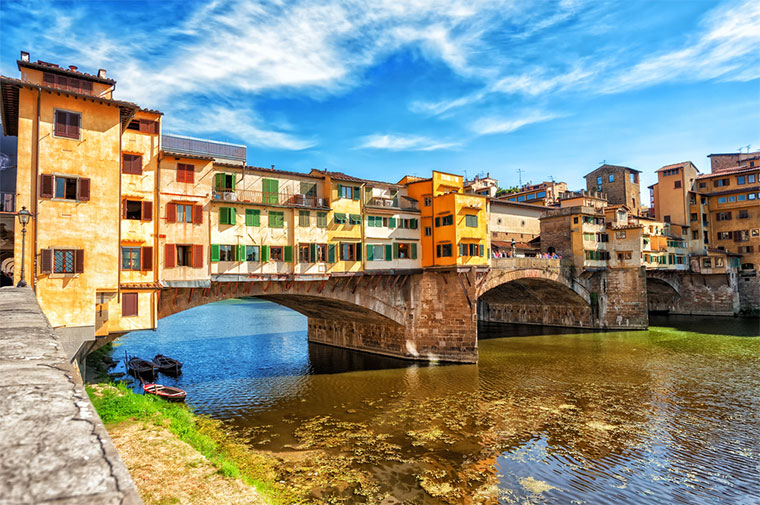
Vasari Corridor
Evidently the Medici’s were a rather particular lot. Not only did they not like the overpowering odours emanating from the bridge, they didn’t like mixing with their unruly citizens either. But as their home in Palazzo Pitti was across the river from the Palazzo Vecchio and Uffizi where they held their seat of power, it was essential to use the Ponte Vecchio regularly to cross. The solution was simple; a raised, covered walkway was built over the bridge allowing exclusive crossing for the Medicis and their VIP guests.
Designed and built by art historian Giorgio Vasari in just 6 months in 1564 the ingenious passage stretches from the south side of the Palazzo Vecchio, through the Uffizi gallery, along the riverside to the ponte and then up to the Palazzo Pitti. It allowed Cosimo de’ Medici and his elite friends to cross the city in privacy and safety. And if you look closely at the bridge you’ll spot the little third floor windows above the shops that give away the location of the corridor. It really doesn’t look like much from the outside, but the Vasari corridor is more than just a functional thoroughfare for the Medicis.
Stepping into the kilometre-long corridor via an anonymous first-floor door in the Uffizi Gallery, you cross into a separate, serene and silent world totally out of reach of the hustle and bustle below. And the corridor would be quite banal except for one fact; it houses one of the most unique collections of over 1000 paintings including the largest assembly of artists’ self-portraits ever gathered. Started by Cardinal Leopoldo de’ Medici in the late 1600s the collection spans the centuries including the faces of art masters Filippo Lippi, Rembrandt, Velazquez, Delacroix, Ensor and Chagal. This is more than a corridor, this is one of Europe’s most important hidden galleries.
Ponte Vecchio lives on
Back down at street level, Florence’s Ponte Vecchio has stood for nearly 700 years, surviving not only the passage of time but also more recently World War II, a devastating flood in 1966 and an Italian terrorist car bomb in 1993. Many hold it to be one of the most romantic spots in the city with wonderful views along the River Arno and out towards the hills. Courting couples kiss, lovers window-shop for rings and partners wield selfie sticks, jostling for the best reminder of their visit. So if you have the chance to visit, stop a while to admire the higgledy-piggledy shops leaning out over the river, or see if you can spot the Medici’s exclusive corridor. It’s a truly historic icon and the highlight of any visit.
